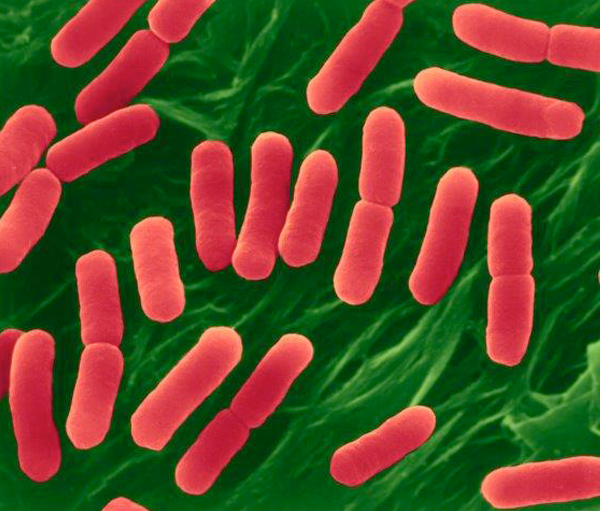
© Dennis Kunkel Microscopy
Home Resources Pathogens What is Escherichia coli O157:H7 - E. coli O157:H7
What is Escherichia coli O157:H7 - E. coli O157:H7

© Dennis Kunkel Microscopy
Escherichia coli (E. coli) is a gram negative bacterium that is commonly present in the intestines of humans and animals.
What makes E. coli O157:H7 so dangerous?
Most strains of E. coli are harmless, but O157:H7 is a key exception because this strain causes severe diarrhea leading to renal damage and other serious complications including death.
E. coli O157: H7 also has the ability to cause disease at a very low dose, survive at low temperatures and under acidic conditions.
Who is more susceptible to infection from E. coli O157:H7?
People of all age groups are susceptible to these bacteria; however immunocompromised, elderly and young children are at a higher risk.
What diseases are caused by E. coli O157:H7?
Infection with Escherichia coli O157:H7 can range from being asymptomatic to having mild to severe gastrointestinal symptoms. The most common symptoms are abdominal cramping and diarrhea, which or may not be bloody. In an uncomplicated case, the illness should recover in less than 5-10 days.
Complications: Hemolytic uremic syndrome (HUS) is one of the complications following E. coli O157:H7 infection especially in children below the age of 5. Hemolytic uremic syndrome is characterized by acute renal failure, microangiopathic hemolytic anemia, fever, and thrombocytopenia. Indeed, HUS is one of the most common causes of acute renal failure in children. One-third of children diagnosed with HUS do not recover completely, resulting in persistent renal failure and the need for long-term dialysis.
Epidemiology of E. coli O157:H7
The disease etiology is universal and can be foodborne or environmental amongst others. E. coli O157:H7 can be transmitted by:
- Eating uncooked/ undercooked ground beef
- Consumption of contaminated sprouts, lettuce, salami, unpasteurized milk
- Swimming in or drinking sewage contaminated water
- Fecal-oral transmission through an infected person to a healthy individual due unhygienic practices.
Incubation Period
The incubation period is usually 2-10 days with a median of 3-4 days.
Diagnosis
An infection with E. coli O157: H7 can be diagnosed by isolating the bacteria from stool samples of infected patients.
Treatment
Many of the patients recover without any antibiotic treatment within 5-10 days. However when the disease does progress to a life threatening complication such as hemolytic uremic syndrome, the patient must be hospitalized and treated supportively in an intensive care unit. Blood transfusions and renal dialysis is often required for such patients.
E. coli O157:H7 path chart
View a path chart for E. coli coli O157:H7.
Contact EHA Consulting Group today for more information about how we can assist your company.
We offer services for
- Retail Food Safety
- Restaurant Food Safety
- Manufacturers
- Food Trucks
- Drugs & Cosmetics
- Melons & Cantaloupes
- Produce
- Warehouses
- Food Packaging & Packaging Materials